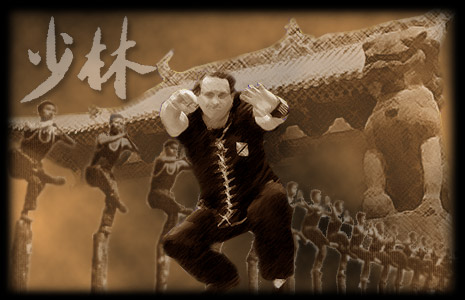History
Legends - The Beginning
Hung Gar's beginnings arise from the destruction of the Sil Lum (Shaolin) Temple. It is said that five monks survived the destruction. This is the story of one of them, Gee Sin Sim See, who is considered the father of Hung Kuen. Hung Gar's origin and Gee Sin Sim See's story is long and complex - this is just a short summary.
The Shaolin Temple was known for producing amazing Gung Fu fighters through extremely hard training. The senior Abbot at the temple was a man named Gee Sin Sim See and his expertise was the Tiger.
It is said by some Hung Gar practitioners that Gee Sin Sim See was the creator of the Hung

style, but this can be argued. Gee Sin Sim See is also noted for helping spread the art of Hung Gar throughout southern China. In the 17th century of China, the southern regions were highly crowded and overpopulated. The larger cities and villages crammed people together tightly. Most of the Gung Fu styles of southern China focused on close quarter fighting techniques with the hands, and low powerful footwork. Most of the weapons where short and dull, and many farm tools were used as weapons. The close in fighting that the southern styles are famous for represents the surroundings of the masters who developed them. Today we look at the techniques of southern styles and marvel at their effectiveness, but the 17th century practitioners were simply using their terrain and surroundings effectively. The geography of southern China had a great impact on the southern styles.
Legend has it that five monks survived the attack on the Shaolin Temple. Gee Sin Sim See was said to have fled southward into Kwangtung Province (Southern China), taking employment as a chef at an Opera house. The Opera house served as a excellent cover for Gee Sin Sim See to teach his art to drama actors and other militant patriots that he came in contact with.
